The tectonic plates of modern work have shifted. What began as a temporary survival tactic during the pandemic has hardened into a strategic redefinition of workplace architecture. By mid-2025, nearly 60% of employers have transitioned to remote-first models, with 69% offering flexible location policies, according to We Work Remotely. That’s not just a policy tweak. It’s a permanent redraw of power, priorities, and productivity.
Remote-First as Competitive Advantage
While corporate giants dabble in hybrid models, it’s the lean, sharp-edged startups and small firms that have fully embraced remote flexibility. Per Business Insider, remote workdays have climbed to 27.9% this year, allowing nimble players to outmaneuver big firms on talent acquisition.
GitHub and Atlassian, for instance, have long gone asynchronous: ditching standing meetings in favor of shared documentation and memos. Others are catching on. As MIT Sloan Management Review outlines, hybrid anchoring such as team-level norms for in-office cadence is replacing top-down mandates.
AI Integration and Workflow Revolution
It’s not just where people work. It’s how. Gartner forecasts that by the end of 2025, 70% of remote teams will be powered by AI-driven transcription and translation tools. What used to be tedious is now instant. And with smarter meeting summaries and sentiment tracking, managers can finally focus on results instead of hours logged.
The rise of asynchronous workflows is no passing trend. It’s a quiet revolution. According to the Financial Times, the pivot from Zoom marathons to Notion boards and pre-recorded video updates is driving not only efficiency but employee satisfaction.
Leadership Without Borders
But even the best tools crumble without intent. Success in a remote-first world begins with defining team purpose early, says the Center for Creative Leadership (CCL). Team charters, clear deliverables, and honest role alignment must come first.
Trust, too, isn’t negotiable. “Don’t hire idiots,” said Mike Cannon-Brookes of Atlassian in The Australian. That blunt philosophy translates into hiring for self-motivation and letting trust, not surveillance, be the default.
Rethinking Communication and Accountability
Leaders must now manage outcomes, not activity. That means no more obsessing over green lights on Slack. Forbes emphasizes shifting from time-on-task metrics to deliverable-based accountability.
Communication protocols are another make-or-break factor. Best-in-class remote teams document everything from how to run a meeting to what qualifies as a “decision.” Time zone alignment is less about overlap, more about clarity. Missteps here can unravel even the most talented teams.
Building Culture Without Walls
Remote doesn’t mean disconnected. Smart teams double down on intentional culture-building. Frequent virtual check-ins, hybrid offsites, and visible recognition foster psychological safety. People Operations, per Wikipedia, now extends to inclusive onboarding, coaching, and feedback systems that scale across continents.
That inclusivity matters. A recent arXiv study on agile teams highlights that diverse team members, especially those identifying as LGBTQIAPN+, thrive better under inclusive, asynchronous practices like retrospectives and pair programming.
Meaningful In-Person Moments
The return-to-office tug-of-war isn’t ending anytime soon. But the smarter firms aren’t forcing it. They’re timing it. MIT Sloan reports that hybrid cadences work best when tied to meaningful business moments: product launches, fiscal closes, or major client pitches.
This function-driven flexibility is helping teams stay grounded, even if they’re globally scattered. Leaders are no longer asking “how often should you come in?” but “when does it actually matter?”
Well-Being as a Metric
Perhaps the most overlooked upside of remote-first is emotional. According to Neat, 79% of professionals report lower stress levels working remotely in 2025. And 82% say their mental health has improved.
Retention data backs that up. A U.S. GAO report in May found that remote/hybrid models correlate with a 12% performance uptick and significant cost savings. Meanwhile, return-to-office mandates at firms like Dell and Amazon have reportedly triggered increased turnover and employee dissatisfaction, as per IT Pro.
Tools of the Trade
To make it all work, execution matters. Pebb.io and Asana are among the top platforms enabling remote workflows in 2025, while Miro fuels collaborative ideation. Smart teams automate agendas using Salesforce-style workflows and adapt agile ceremonies for the virtual stage, as outlined in recent arXiv research.
Even hardware has caught up. AI-enhanced cameras like Panasonic’s PTZ series auto-frame participants in hybrid settings, helping bridge the physical gap with intuitive technology.
What Comes Next
The workplace won’t snap back. That was clear years ago. What’s unfolding now is far more interesting: a pragmatic, sometimes messy, often liberating new era of work where results rule, culture is curated, and geography is no longer destiny.
It’s not utopia. But for those who get it right, it’s undeniably better.
Connect With Us On Social Media [ Facebook | Instagram | Twitter | LinkedIn ] To Get Real-Time Updates On The Market. Entrepreneurs Diaries Is Now Available On Telegram. Join Our Telegram Channel To Get Instant Updates.
Amara is a Nigerian-American leadership coach and ex-triathlete known for helping founders master resilience, focus, and energy management.






